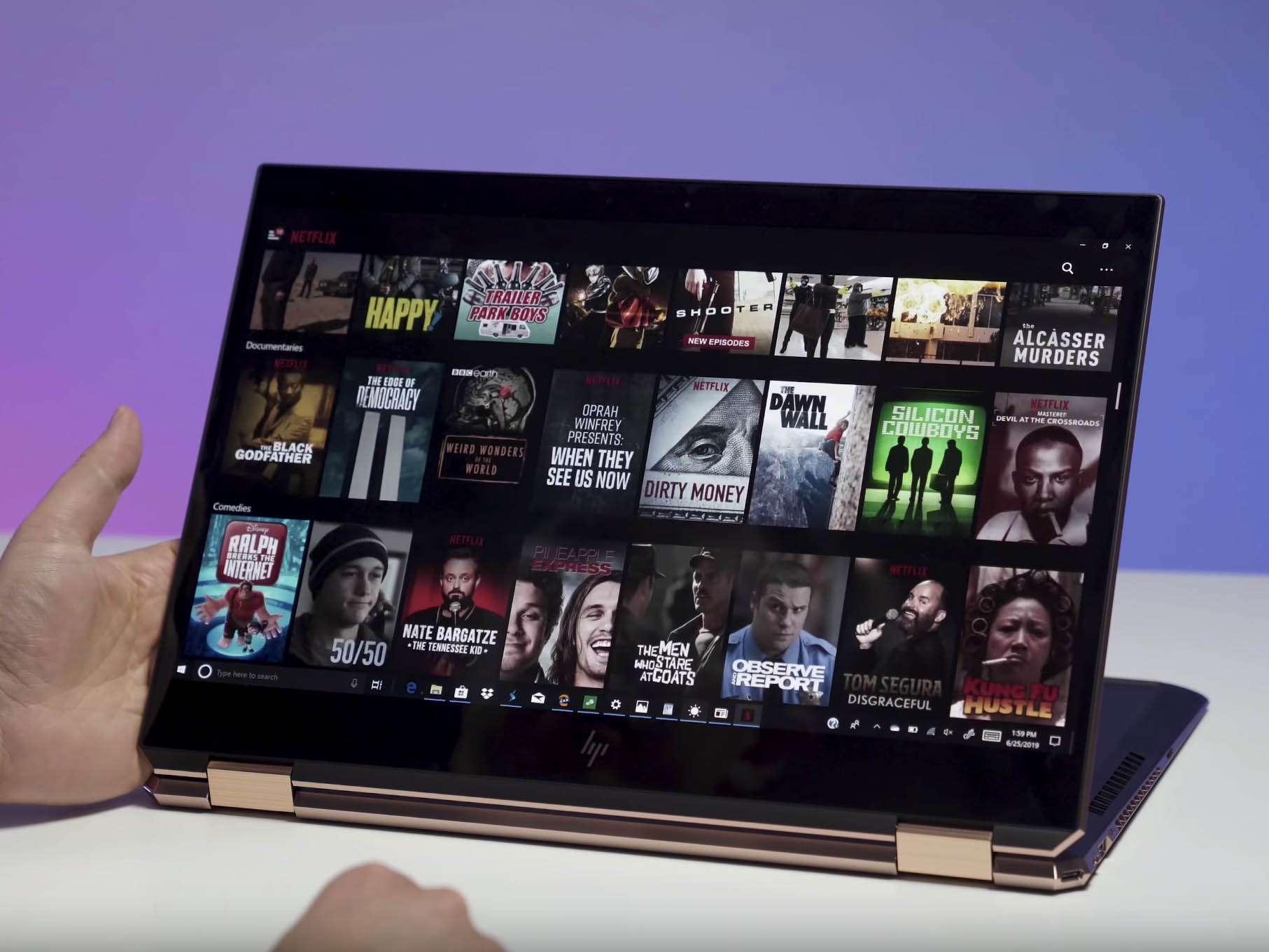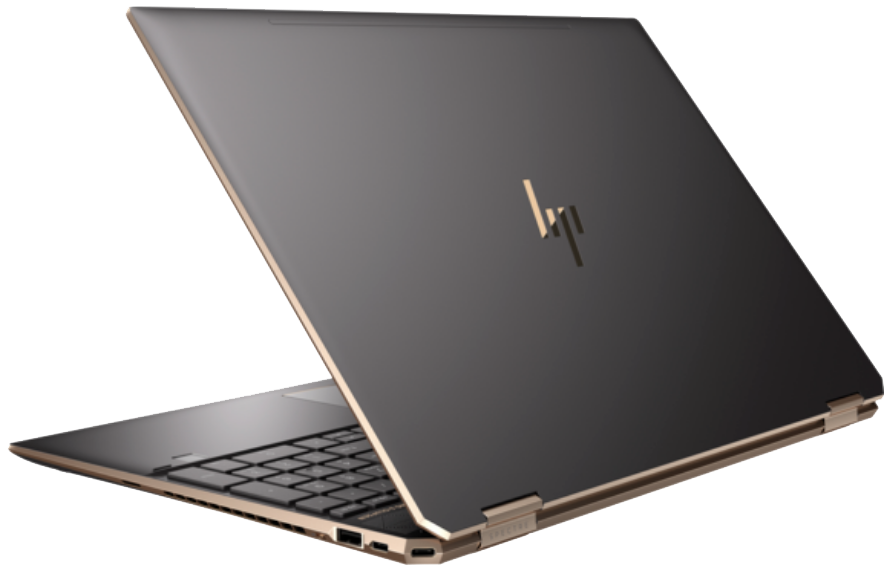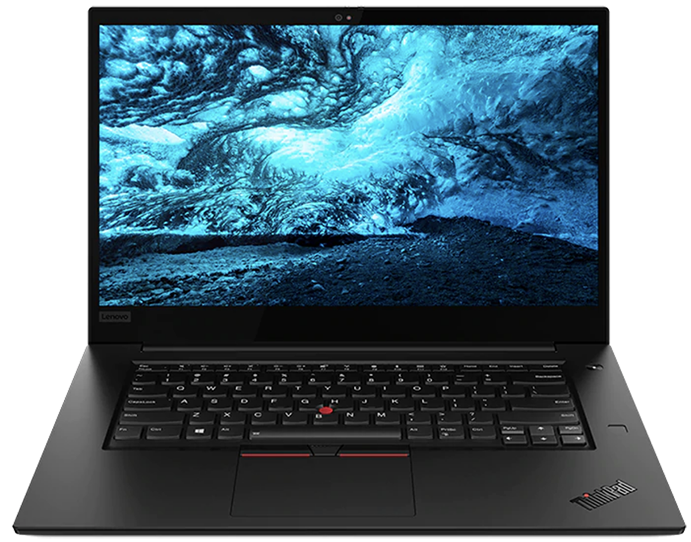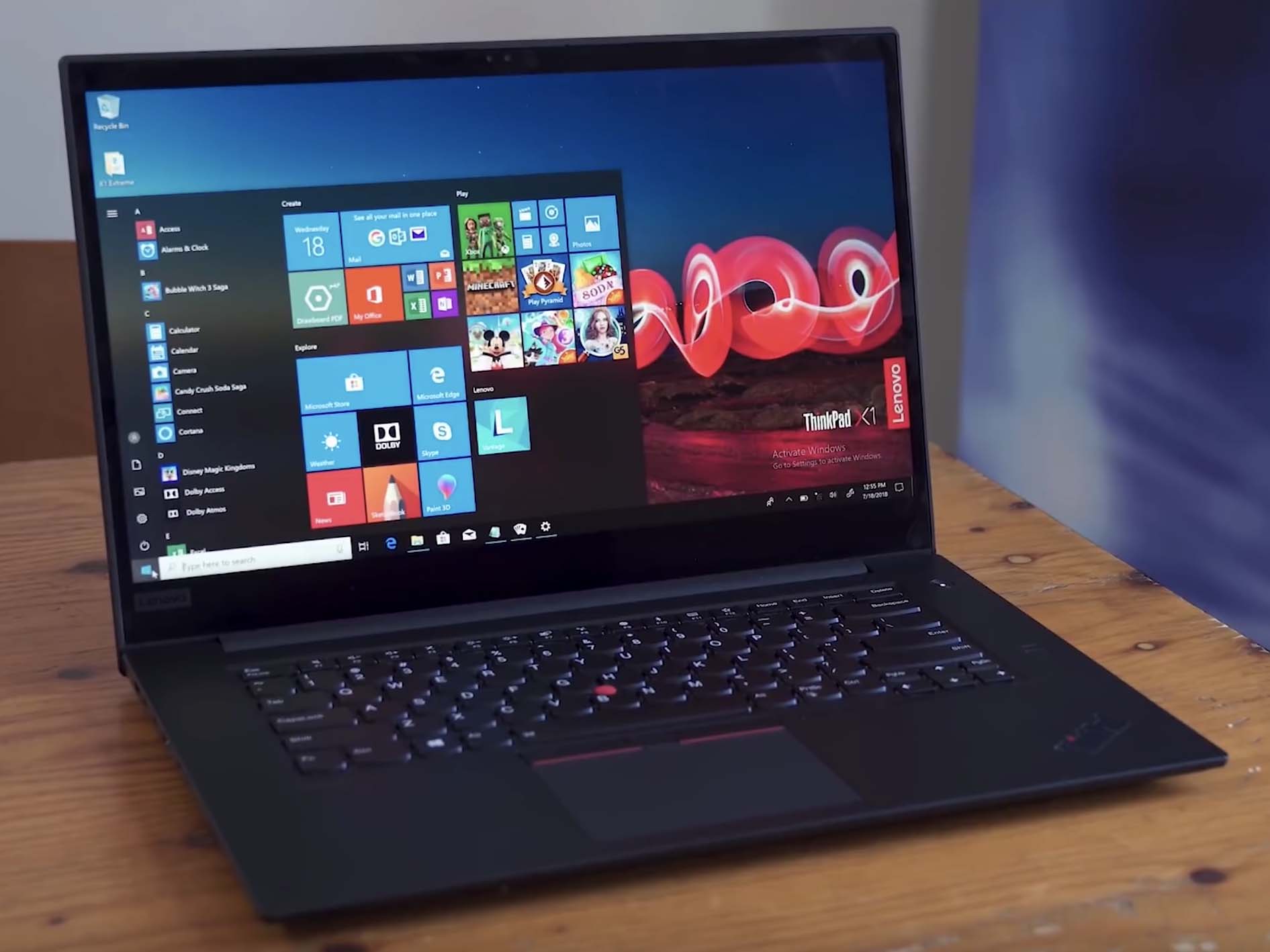

Premium convertible
The convertible HP Spectre x360 15 is a gorgeous laptop with plenty of configuration options available, including a stunning 4K OLED display. The affordable price and versatile convertible build make it a great choice for many people, especially if they'd like to use an active pen for sketching or note-taking.
For
- More affordable
- More dedicated GPU options
- Beautiful 4K touch display options with inking
- Premium gem-cut design
- Extra versatility thanks to convertible build
Against
- Not as durable
- No FHD display option
- Synaptics drivers for touchpad

Durable business notebook
The ThinkPad X1 Extreme is more of a workhorse business laptop with a durable chassis, comfortable keyboard and Precision touchpad, plenty of ports, and extra security features. It does cost more and doesn't have as many configuration options available, making it more of a specialized purchase.
For
- MIL-STD 810G durability certified
- Comfortable keyboard, Precision touchpad
- Robust security and management features
- FHD and 4K display options
- Plenty of ports
Against
- More expensive
- Not yet an OLED display option
- Not as many configuration options
We have here two 15-inch laptops: the x360 with a convertible build and the X1 Extreme with a standard notebook chassis. They're both fine devices and have similar performance hardware, though some major differences will no doubt sway you one way or the other.
HP Spectre x350 15 vs. Lenovo ThinkPad X1 Extreme at a glance
| Header Cell - Column 0 | HP Spectre x350 15 | Lenovo ThinkPad X1 Extreme (Gen 2) |
|---|---|---|
| Processor | 8th GenIntel Core i7-8565U9th GenIntel Core i7-9750H | 9th GenIntel Core i5-9300HIntel Core i5-9400H vProIntel Core i7-9750HIntel Core i7-9850H vPro |
| RAM | 8GB, 16GB DDR4-2400MHz | 8GB, 16GB, 32GB, 64GB DDR4-2666MHz |
| Storage | 256GB, 512GB, 1TB, 2TB PCIe M.2 SSD32GB Intel Optane (optional) | 256GB, 512GB, 1TB PCIe M.2 SSD |
| Display size | 15.6 inches16:9 aspect ratio | 15.6 inches16:9 aspect ratio |
| Display resolution | 3840 x 2160 (WLED non-touch)3840 x 2160 (AMOLED touch) | 1920 x 1080 (IPS non-touch)1920 x 1080 (IPS HDR400)3840 x 2160 (IPS HDR400) |
| Graphics | NVIDIA MX150 (2GB)NVIDIA GTX 1650 (4GB)NVIDIA GTX 1050 Ti (4GB) | NVIDIA GTX 1650 (4GB) |
| Ports | HDMI 2.0USB-A 3.1 (Gen 2)Two Thunderbolt 3microSD card reader3.5mm audio | Two USB-A 3.1 (Gen 1)Two Thunderbolt 3HDMI 2.0Ethernet extension adapter3.5mm audioSD card readerSmart Card reader (optional) |
| Biometrics | Fingerprint readerIR camera | Fingerprint readerIR camera |
| Battery | 84Wh | 80Wh |
| Dimensions | 14.22 x 9.84 x 0.76 inches(361.2mm x 249.9mm x 19.3mm) | 14.24 x 9.67 x 0.72 inches(361.8mm x 245.7mm x 18.4mm) |
| Weight | From 4.79 pounds (2.17kg) | From 3.75 pounds (1.7kg) |
| Colors | Poseidon blueDark ash | Black |
Design and features
HP's Spectre x360 has a beautiful gem-cut convertible chassis with a unique premium look. It's certainly fancy and will fit in just about anywhere you take it, including the coffee shop or the office. It's available in poseidon blue or dark ash finishes so you can pick something that best matches your other gear, while the ThinkPad X1 Extreme is available in the standard black soft-touch ThinkPad finish. If you opt for the 4K display, the lid includes a carbon-fiber weave finish for a bit of flair.
The ThinkPad overall has a more utilitarian look to it, but it's actually a bit lighter than the Spectre x360 (starting weight of 3.75 pounds compared to 4.79 pounds) due to the lack of convertible functionality. Both laptops have about the same size footprint, so portability will lie mostly on weight. If you need something as durable as possible, the X1 Extreme will make a better choice because of MIL-STD 810G certification that ensures the device can put up with conditions far more extreme than what you'd find in an office or home setting.
The X1 Extreme has a focus on power users, and it's stocked with ports to keep up. Two USB-A 3.1 (Gen 1), an SD card reader, a Kensington lock slot, and an optional Smart Card reader for Enterprise buys are located on the right side. The left contains Lenovo's charging port, dual Thunderbolt 3 ports, HDMI 2.0, an input for Lenovo's RJ45 Ethernet dongle, and a 3.5mm audio jack. If you go with the Spectre x360, you'll have access to HDMI 2.0, USB-A 3.1 (Gen 2), two Thunderbolt 3, a microSD card reader, and 3.5mm audio. A full-size SD card reader on the x360 would be appreciated, and if you're often dealing with the larger storage size, the X1 Extreme might be the better option.

These two laptops are productivity machines, so keyboard and touchpad are an important part. With the X1 Extreme, you get a standard ThinkPad keyboard with plenty of travel and comfortable keys, and included is a TrackPoint system with red pointing nub and physical buttons above the Precision touchpad. There is, however, no number pad, which is included with the Spectre x360's comfortable keyboard. HP's laptop is also using Synaptics drivers for its touchpad, which don't compare to Precision drivers.
You're going to get plenty of security features with the X1 Extreme, including optional IR camera, fingerprint reader, TPM 2.0 chip, vPro processor (CPU) options, optional Smart Card reader, Kensington lock slot, and ThinkShutter camera cover, though the Spectre x360 does include a shutoff switch for the webcam (IR and FHD) as well as a fingerprint reader for Windows Hello.
If you want a convertible laptop, the Spectre x360 is the only option between these two, and it's going to provide an overall premium experience. It might not be as durable or have as many security and management features as the X1 Extreme, but it does go above and beyond plenty of other laptops when it comes to keeping your data safe. If, on the other hand, you're looking for a durable notebook with more of a practical design (that's also significantly lighter), the X1 Extreme will make a great pick.
Get the Windows Central Newsletter
All the latest news, reviews, and guides for Windows and Xbox diehards.
Display
Both of these laptops have some impressive 15.6-inch display options, though if you'd like to go with 4K OLED right now, only the Spectre x360 can provide; the X1 Extreme is still expected to get an OLED 4K display sometime in the future. At the moment, the X1 Extreme is available in 1080p non-touch with and without HDR400 support, as well as 4K non-touch with HDR400 support.
If you're interested in inking, the Spectre x360 is the laptop for you. It can be folded around to tablet mode to make drawing, sketching, or jotting down notes much easier, and a quality active pen is included. As for specialized work that requires accurate color reproduction, the higher-end displays in both laptops are your best bet.
Performance and price
When it comes to performance, both of these laptops put up some impressive numbers. The X1 Extreme has one dedicated GPU option — the NVIDIA GTX 1650 Max-Q with 4GB of VRAM — and up to a 9th Gen Intel Core i7-9850H CPU, as well as up to 64GB of RAM and up to a 1TB PCIe M.2 solid-state drive (SSD). You can get the same GTX 1650 GPU in the Spectre x360, though you can also opt for a GTX 1050 Ti or an MX150 GPU if you don't need as much power.
The Spectre x360 comes with either an 8th Gen Intel Core i7-8565U or 9th Gen Intel Core i7-9750H CPU for extra performance, and it can be had with up to 16GB of DDR4 RAM and a 2TB M.2 PCIe SSD. Both laptops are capable of getting into specialized work thanks to powerful CPU and GPU options, and you'll even be able to game on either laptop. If you'd like the best battery life possible, the FHD non-touch X1 Extreme is no doubt the pick for you.
HP's Spectre lineup is generally considered to be a great value, and you can grab a model starting at about $1,350 complete with 8th Gen Core i7 CPU, NVIDIA MX150 GPU, 16GB of DDR4 RAM, and a 256GB SSD. There's also a $1,400 option with 8th Gen Core i7 CPU, GTX 1050 Ti GPU, 8GB of DDR4 RAM, and a 512GB SSD. Prices scale up as you add hardware, though you can grab a model with 9th Gen Intel CPU and NVIDIA GTX 1650 GPU starting at about $1,600.
Lenovo's prices often fluctuate significantly due to sales and coupons, but the official starting price of an X1 Extreme sits around the $2,459 mark. However, we've seen it drop down closer to $1,476 for a model with Core i5-9300H CPU, 8GB of RAM, 256GB SSD, NVIDIA GTX 1650 GPU, and FHD non-touch display. That's still more than you'll pay for an introductory x360, which has the 4K touch display and Core i7 CPU.
The HP Spectre x360 15 is the right choice for many people
Thanks to a significantly cheaper price, versatile convertible build, and premium gem-cut design, the HP Spectre x360 should appeal to a lot of people. It might not be as durable as the X1 Extreme and its Synaptics drivers are an annoyance, but this is still a lot of laptop for a great price.

4K touch display, plenty of hardware options
If you're interested in a premium convertible laptop with stellar display and impressive performance, the HP Spectre x360 15 will make a great choice.
Lenovo's ThinkPad X1 Extreme (Gen 2) is a better pick for pros
You will pay more for the X1 Extreme, but if durability, port selection, and security are at the top of your list, it will be worth it. There's not yet an OLED 4K display option officially available, but the FHD and 4K display available now are still great to look at thanks to HDR400 support.

Cale Hunt brings to Windows Central more than eight years of experience writing about laptops, PCs, accessories, games, and beyond. If it runs Windows or in some way complements the hardware, there’s a good chance he knows about it, has written about it, or is already busy testing it.
